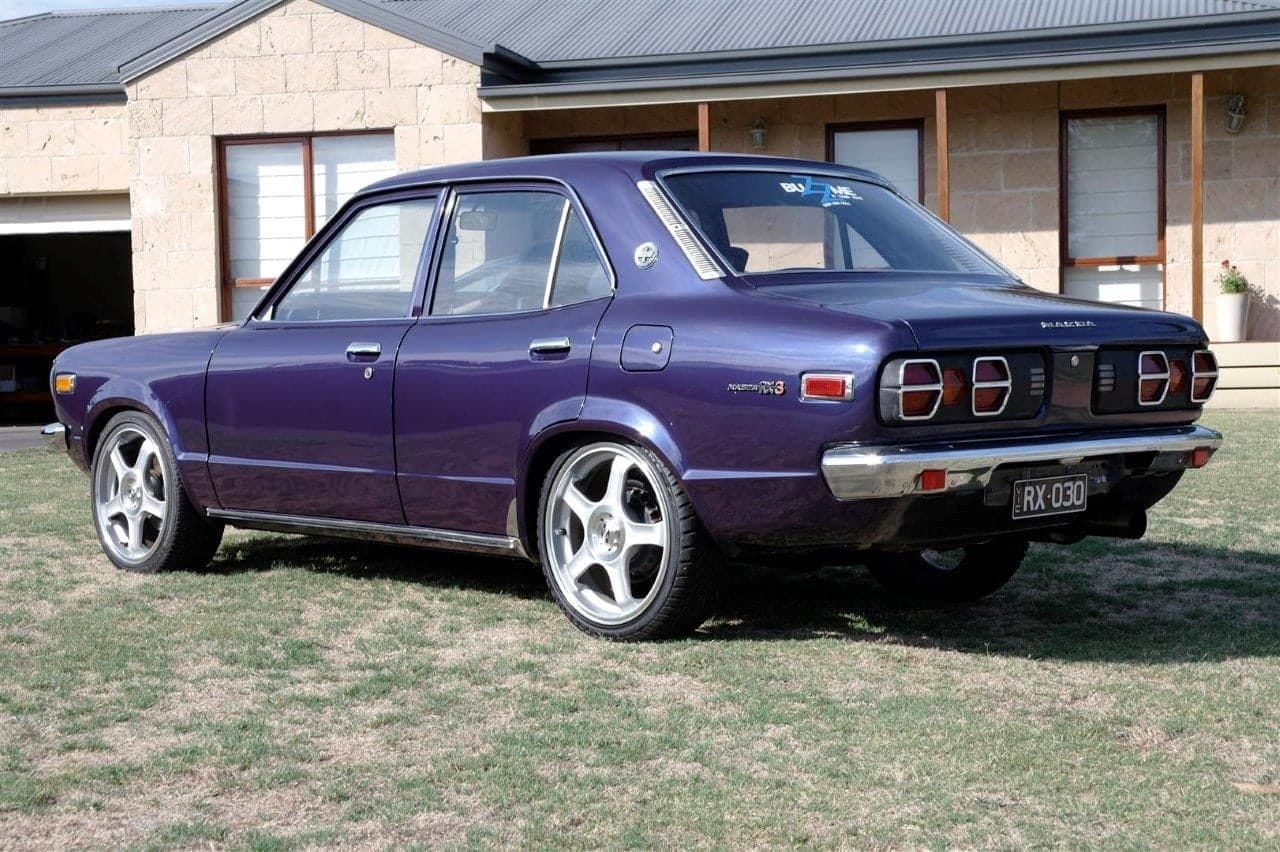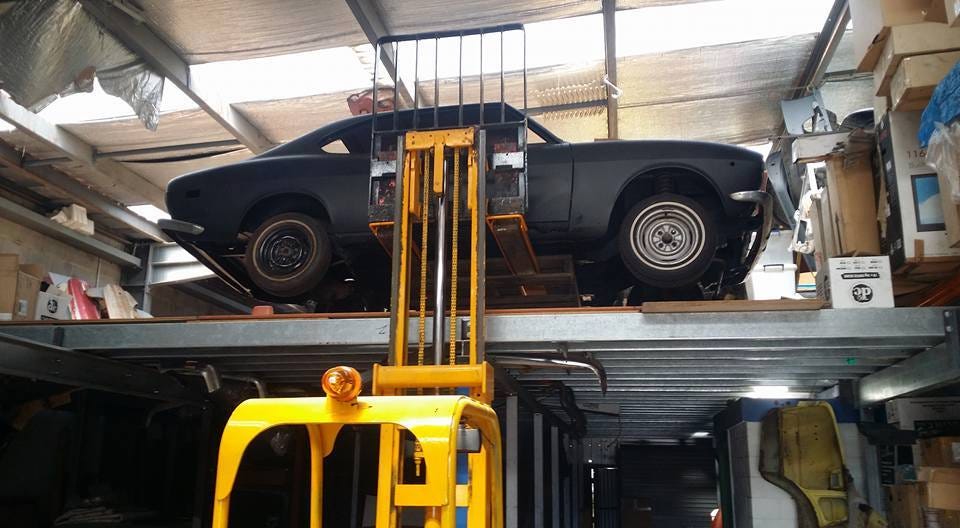Australian and New Zealand Rotary Owners are a special breed
Spoke to a couple of blokes about their cars
Original or modified, project or dream car a rotary is something special. Not just for the people who get the rare opportunity to see and appreciate them. Even more so for the people that own them it’s a labour of love, a pain in the ass and absolutely worth it for those who are most passionate about them. Whether it’s a classic resto or a modern weapon, there’s a rotary that fits your bill.
Australia and New Zealand together, received almost every rotary produced by Mazda from 1969 to 2012, from the r100 to the Rx-7 Bathurst R and the passion shows. Every Mazda unique, every rotary swap has their own taste, every rotary owner has a story and seeing factory originals all the way through to the meanest, fastest drag rotaries is an event to behold.
Brendan Rowe, a kiwi who has loved and owned rotaries his entire life, across Australia and New Zealand and current owner of a modified Yellow Mazda Rx-2, “My [second car] first Mazda was in 1995, an Rx-2, it was in a sad state of affairs, I paid 750 bucks. It needed a bit of work,” Brendan said, “I’ve pretty much had one or two [rotaries] in the shed ever since, that’s between living in Australia and New Zealand.”
Like all kids who love cars, Brendan’s dad thought a Corolla for his first car was more appropriate than a Mazda Rotary. “My first car wasn’t allowed to be a Mazda, dad reckons I would have wrapped it around a power pole,” Brendan said. 26 years later and this drive for rotaries hasn’t dulled.
“The next one was also an Rx-2 [1996], for the next one I sold everything that I owned, cars, everything. I went all out and bought an Rx-3 Coupe,” Brendan said, “I had that back in 1997 and had spent a lot of money back in the day, I paid $8,300 NZD for it… I ended up selling that and that was the deposit on my first house.”
After all the Rx-2s, Rx-3s, coupes and sedans it’s fallen back to old habits for Brendan with the current Rx-2 Sedan. It didn’t matter how many rotaries he had; how many cars he went through the Rx-2 Sedan stuck with him. “I’ve always been searching in the background, then this popped up in Bayswater,” Brendan said, “I rang my boss, said I’m out for the day and went up there to buy it. I left here at 3pm and I reckon it was on the transporter backing in the driveway at 6pm.”
In hindsight he was lucky to get the car as the seller had 90+ messages by the time he got to Bayswater. “The Rx-3 sedan that I had wasn’t the Rx-2 I had when I was a kid, that’s where the motivation comes from for something like this,” said Brendan, “I’m never gonna sell it, I’ll have it until I go then it’s the kids’ problem.”
Although not the most heavily modified Mazda, there’s no original interior inside, bucket racing seats, big brakes, big wheels, Australian spec and a modest 300 horsepower coming from the naturally aspirated 13b. “The rotaries have a history of racing so I’m pretty comfortable where it is,” Brendan said, “everywhere it goes it draws a crowd.”
However, the enthusiasts and rotary lovers come in all different shapes, sizes and styles. Mo Melville is one of these different styles choosing to restore and maintain originality in the early model Mazda’s, “I’m kinda partial to the r100, it just has such simple, beautiful easy lines… I’m partial to all the early ones, anything rotary,” Mo said.
Like Brendan the first car wasn’t a Mazda, “my first car was a Gemini and I had a 12a Bridgeport,” Mo said, “in my early 20’s I had a WRX but I wanted something a little more classic. When I was at uni I remember going home and buy a bonnet, dragging it onto a train and storing it for 12 or 15 years.” This drive pushed him to buy his first Mazda at around 20 years old, a project Mazda r100 which he still has today (pictured above).
Enthusiasts sprout randomly, some from the day they got their first car, some later in life, Mo, he’s always been around it, “the passion for automotive came later from him [his father], I wasn’t too interested at first.” Mo said, “later on in my early 20’s I started to really get involved with them. I used to see rotaries, they were so distinct. A bit different and I’m a bit different, I guess.”
The words rotary and slow aren’t ones that are often placed together but that’s because we live in a world with Le Mans winning rotaries, YouTube and car magazines showing us what the world can create and so much more but some of these cars are extremely old. On, over or almost 50 years old. “One of the biggest things I noticed, especially with the 10a r100’s and Rx-3, they’re ridiculously slow. It becomes a safety concern,” said Mo. Something not many people talk about when restoring cars and considering which engine to run it.
The chassis is one thing, Mazda rotaries are very distinct but the sound, the smell, the feel of the engine is what draws people in. “The engine, especially ported engines. They’re so distinct, they sound so tough. They’re like nothing I’d ever seen or heard,” Mo says. The high revving, oil burning scream of a rotary flying past you is something every person who peripherally likes cars needs to experience but modding, that’s a personal thing.
“I think I’m a real purist, where I understand that other people have different things, I personally don’t want to see an original car modified but it’s no one else’s business. Different strokes for different folks,” Mo said, “if someone wants to buy an immaculate, original low ownership car and cut it up, that’s their business.”
The rotary is a product of a bygone era and isn’t likely to return as a production, petrol burning engine but the customisation, racing and restoration scene will live on keeping that iconic brap running,
“I wouldn’t change a thing,” Mo says.












